‘Regeneration and repair is a really important part of how I work’: Bharti Kher at Yorkshire Sculpture Park
Bharti Kher unveils the largest UK museum exhibition of her career at Yorkshire Sculpture Park

There are three tall goddesses standing guard outside Yorkshire Sculpture Park’s Underground Gallery. Created by Bharti Kher for the largest UK museum exhibition of her career, the trio appear as three-dimensional collages, seemingly made of various characters. It’s a startling introduction to Kher’s work, but one which speaks to core ideas in her practice and way of thinking about the world.
The three sculptures started life as clay figurines displayed in Indian homes for the Navaratri festival, representing and celebrating various facets of life. The artist had collected such statuettes over several years, sending them en masse to her Delhi studio only to discover that many had smashed in transit. Instead of jigsawing the broken pieces back together, Kher created new godlike composites in bronze, scaling up and amalgamating the various represented strands of Indian life.

Bharti Kher, The fallow, 2019. Courtesy the artist, Hauser & Wirth, Nature Morte and Perrotin
“Regeneration and repair is a really important part of how I work,” Kher says of a process that combines and configures apparently incoherent elements and across the three Yorkshire Sculpture Park galleries this playful but poetic approach to regeneration recurs. The first gallery presents a more intense transformation of material, with a darker backstory. The Deaf Room (2001-12) is formed of glass bricks crudely cemented into a cube chamber with a small opening. Its architectural form references a bakery burnt down during the 2002 Gujarat inter-communal riots, and its bricks are made of 10 tonnes of melted-down glass bangles in an alchemical act of transformation. While individuals were killed in the bakery fire, Kher is making wider comment upon violence against women across culture, the bangles which once sang as they jangled against one another now solidified into silence.
The Deaf Room is about the body. Through inhabiting the sculpture, the visitor’s own body is positioned in relation to the absence of bodies – and lives – symbolically represented by the compressed bangles. The body is also central to Kher’s practice, and is no more celebrated and explored than in the second, largest, gallery, with a crowd of eclectic characters. All are female, but transmogrified ideas of the human form, hybrids of humans with animals, gods, materiels, and memories. “I've always dreamt, after years of making and casting these female sculptures, that one day I would be able to bring them and put them into a room together, where they talk to each other like sisters,” Kher says of the works which span from 2008 to today and are arranged across a raised staging loosely based on a Hindu temple form.
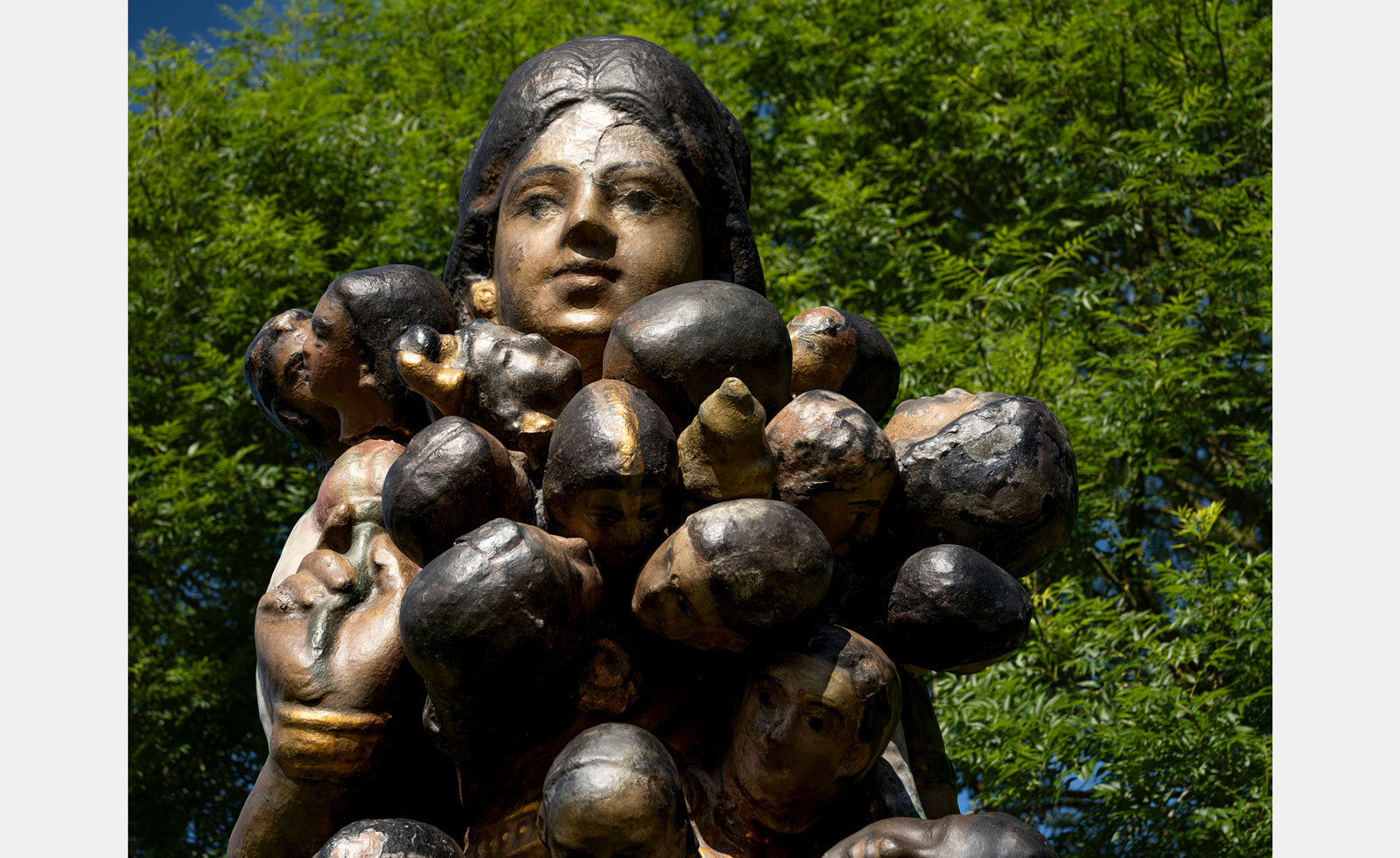
Bharti Kher, Ancestor, 2022. Collection of the Kiran Nadar Museum of Art, Delhi. Courtesy the artist, Hauser & Wirth, Nature Morte and Perrotin
As well as representing the female body, these works all speak to the identities and positions of women in wider culture and society – whether goddesses, monsters, or warriors, or those with more everyday and human experiences including mothers and sex workers. Saris are wrapped around many works, often in such abundance to conceal the body and face within, Kher painting the fabric in resin before shaping it around the body and allowing it to harden to a shining solid. There is a rich, playful use of materials throughout, including measured-triangle holding The Alchemist (2024), made of papier-mâché – “I am shredding all my old Art Forums, it’s great fun!” – and who Kher describes as the closest in the room to a self-portrait: “she is the creator of the show.”
The bodies are all cast from people known to the artist, though in the process they lose their identity and take on a hybrid, mythical presence. For Kher casting is more than a simple stage of her artistic process, but central to meaning and essence of the final works. “Without the grist of casting – the essence of the body, the smell of the skin, the heat of the plaster that goes into the body and impregnates the skin, taking something with it – a lot of figures would become static,” she says of the casting process which is not only intense for the individual wrapped in plaster, but also for the artist. “When you cast the skin of someone, you have to rub it between every single crease, it's the most tender thing, almost like touching your child for the first time,” Kher explains, adding that “you push the wet plaster into all the creases of every part of the body, and when it starts to dry, the plaster heats and the pores of your skin open up.” For Kher this is an an important act of transference in which the memory of a person’s life and character is carried from the body to become imbued into the new entities on display.
The final room offers a sudden juxtaposition from previous crowded clamour, presenting a simpler and more withdrawn space of clarity that deeply speaks to the qualities of plaster Kher discusses. Here, in a crisply lit white space, sit a row of six naked middle-aged women. These are not bodies as portrayed by classical (male) sculptors of art history, but appear as intensely present and real woman, silently facing the visitor with eyes closed. They are all sex workers from Sonagachi in Kolkotta, one of the largest red-light districts in the world, estimated to employ over 16,000 women, including these six in Yorkshire.
Wallpaper* Newsletter
Receive our daily digest of inspiration, escapism and design stories from around the world direct to your inbox.
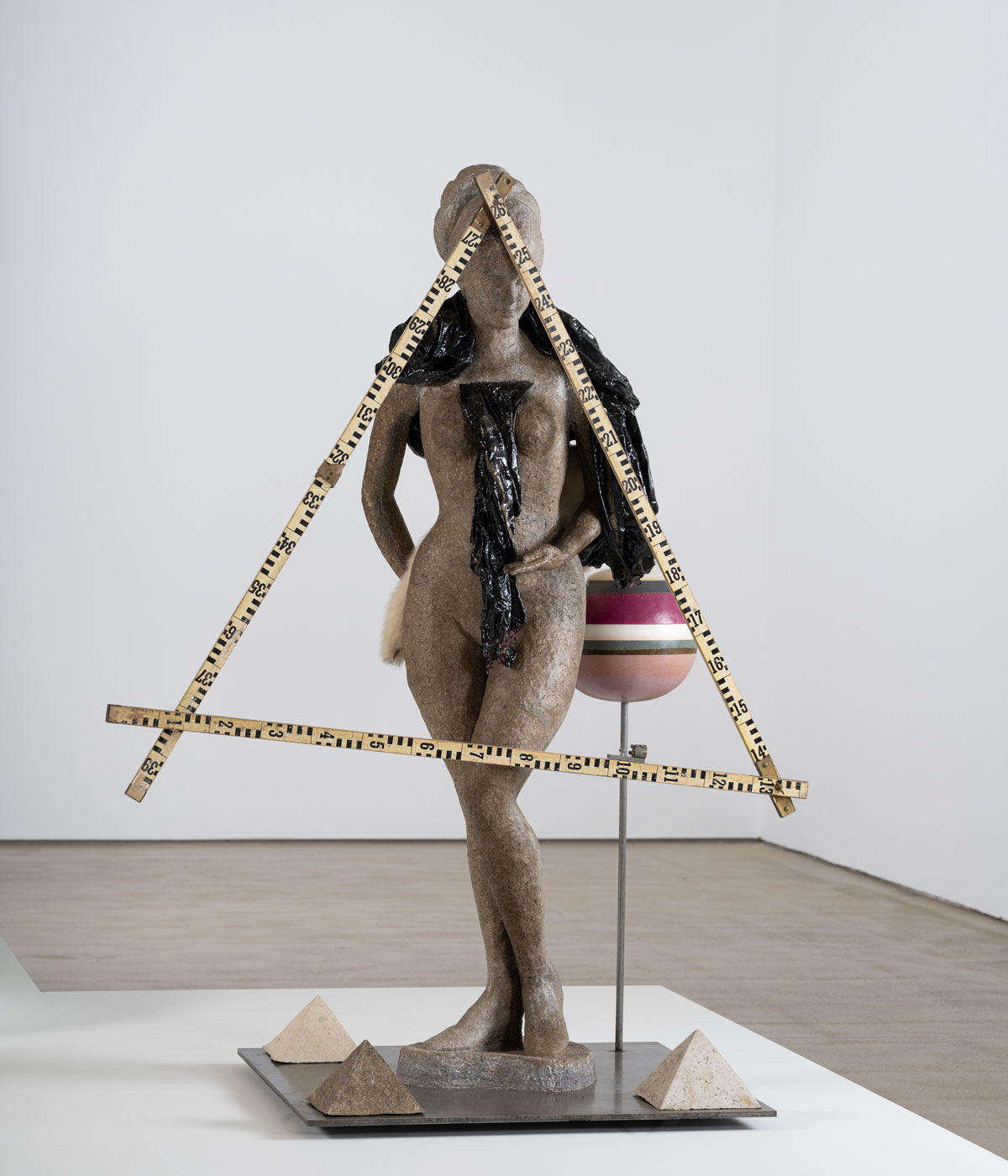
Bharti Kher, The Alchemist, 2024. Courtesy the artist, Hauser & Wirth, Nature Morte and Perrotin
Kher took the ladies for lunch to explain her work: “I was very clear: ‘I'm an artist, my role is not as an NGO, I'm not here to ask you about your story, I'm not here to change your life, and I'm not here to help you, I'm here literally to ask, would anyone like to come to my studio and be cast – I make goddesses.” Again, the artists interest in exchange is present, but here within a very prosaic monetary system. In paying the women for their time – and bodies – as she would her other models, she wonders if as an artist she differs in any way from other commercial transactions they carry out daily. In the hands of other artists, such economic relationships can be at best distasteful and at worst unethical, but it seems Kher is genuinely interested in her models not only as people but as peers, selecting women around her age and all having had children, with “a maturity and matter of factness about their lives.”
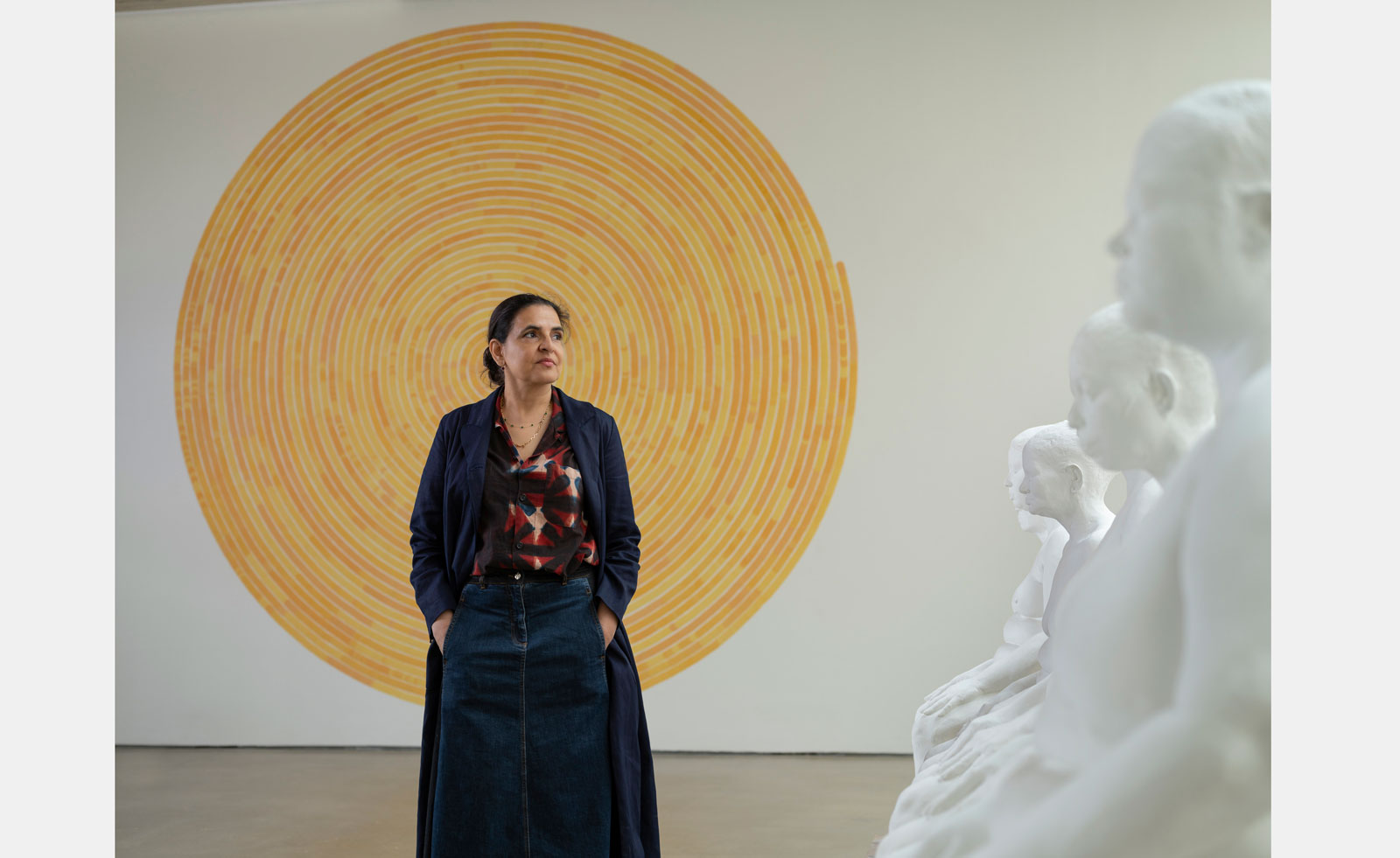
Bharti Kher, Alchemies, installation view at Yorkshire Sculpture Park, 2024. Courtesy the artist, Hauser & Wirth, Nature Morte and Perrotin
Bharti Kher’s enormous goddesses standing guard outside and the array of unlikely mythical beings in the central gallery are the loudest, brightest, and most spectacular works on show. But it’s the bookends to the presentation, the hardened cube commemorating lives lost and the row of sex workers sat in contemplative silence, that carry the most powerful poetry. Transformation and reconfiguration of the body and being are present across all the works through material and idea, with these six women who look back with closed eyes also inviting the visitor to reconsider their own inner being.
Bharti Kher: Alchemies Yorkshire Sculpture Park until Sun 27 Apr 2025
Will Jennings is a writer, educator and artist based in London and is a regular contributor to Wallpaper*. Will is interested in how arts and architectures intersect and is editor of online arts and architecture writing platform recessed.space and director of the charity Hypha Studios, as well as a member of the Association of International Art Critics.
-
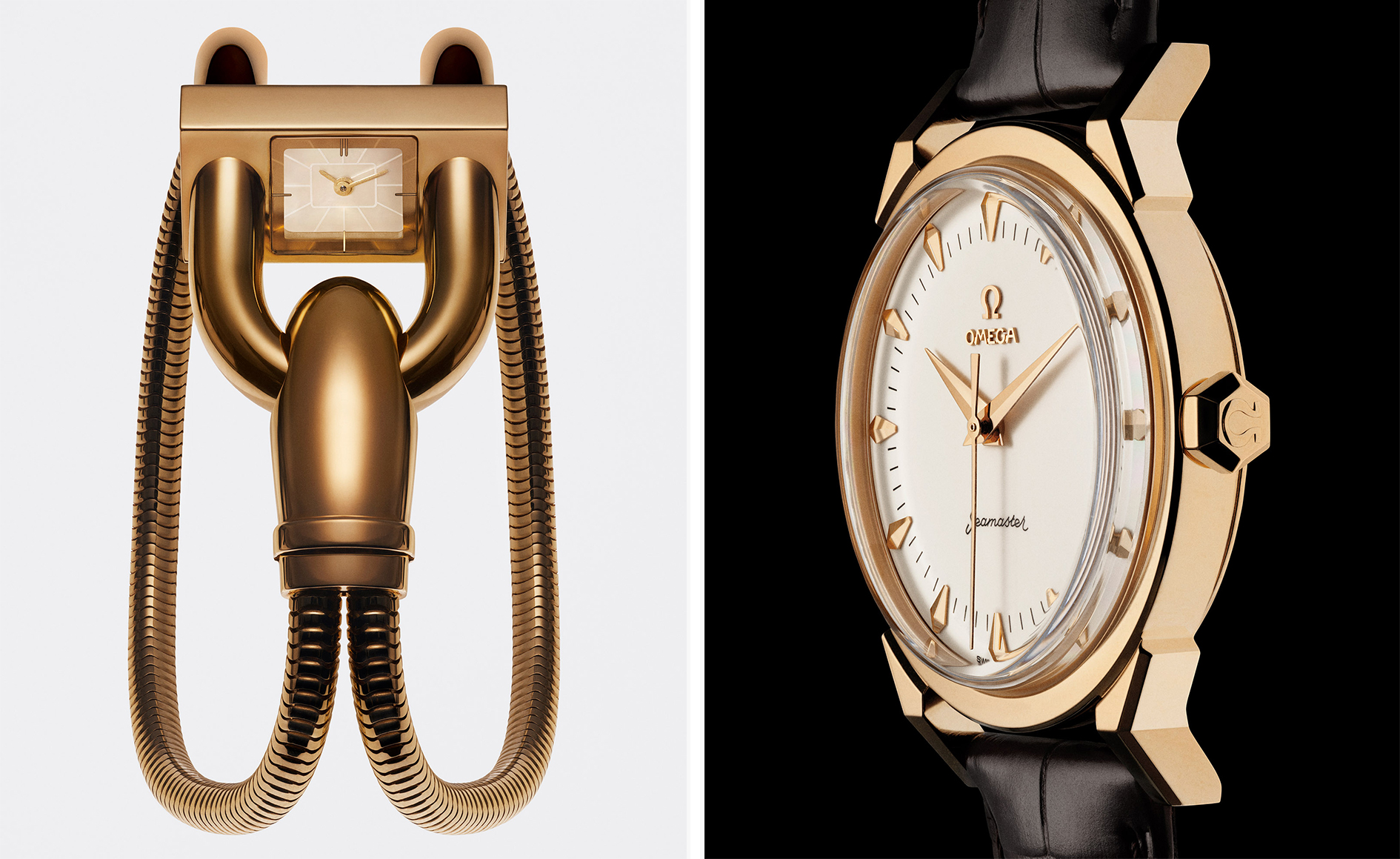 A stripped-back elegance defines these timeless watch designs
A stripped-back elegance defines these timeless watch designsWatches from Cartier, Van Cleef & Arpels, Rolex and more speak to universal design codes
By Hannah Silver
-
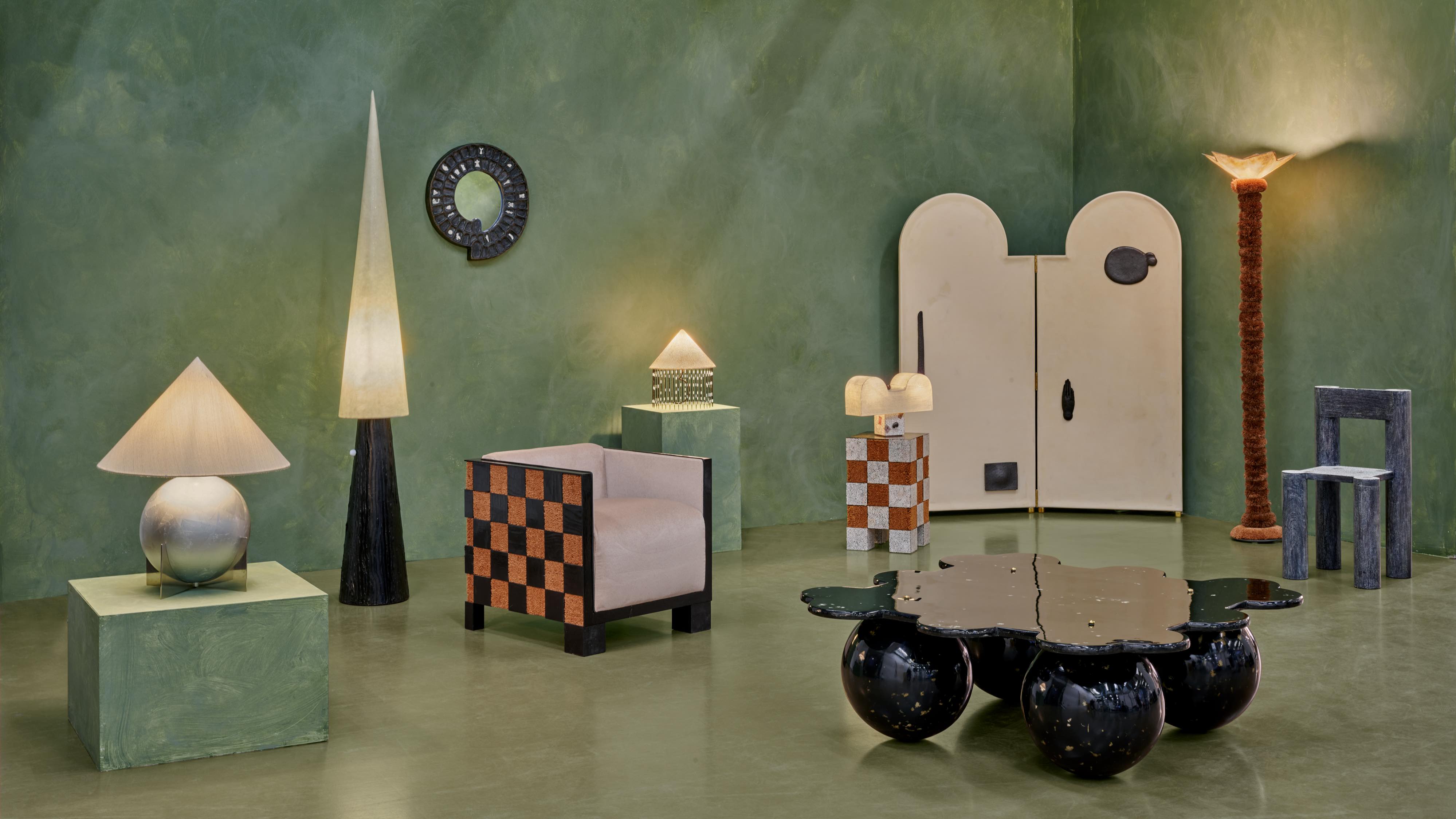 Postcard from Brussels: a maverick design scene has taken root in the Belgian capital
Postcard from Brussels: a maverick design scene has taken root in the Belgian capitalBrussels has emerged as one of the best places for creatives to live, operate and even sell. Wallpaper* paid a visit during the annual Collectible fair to see how it's coming into its own
By Adrian Madlener
-
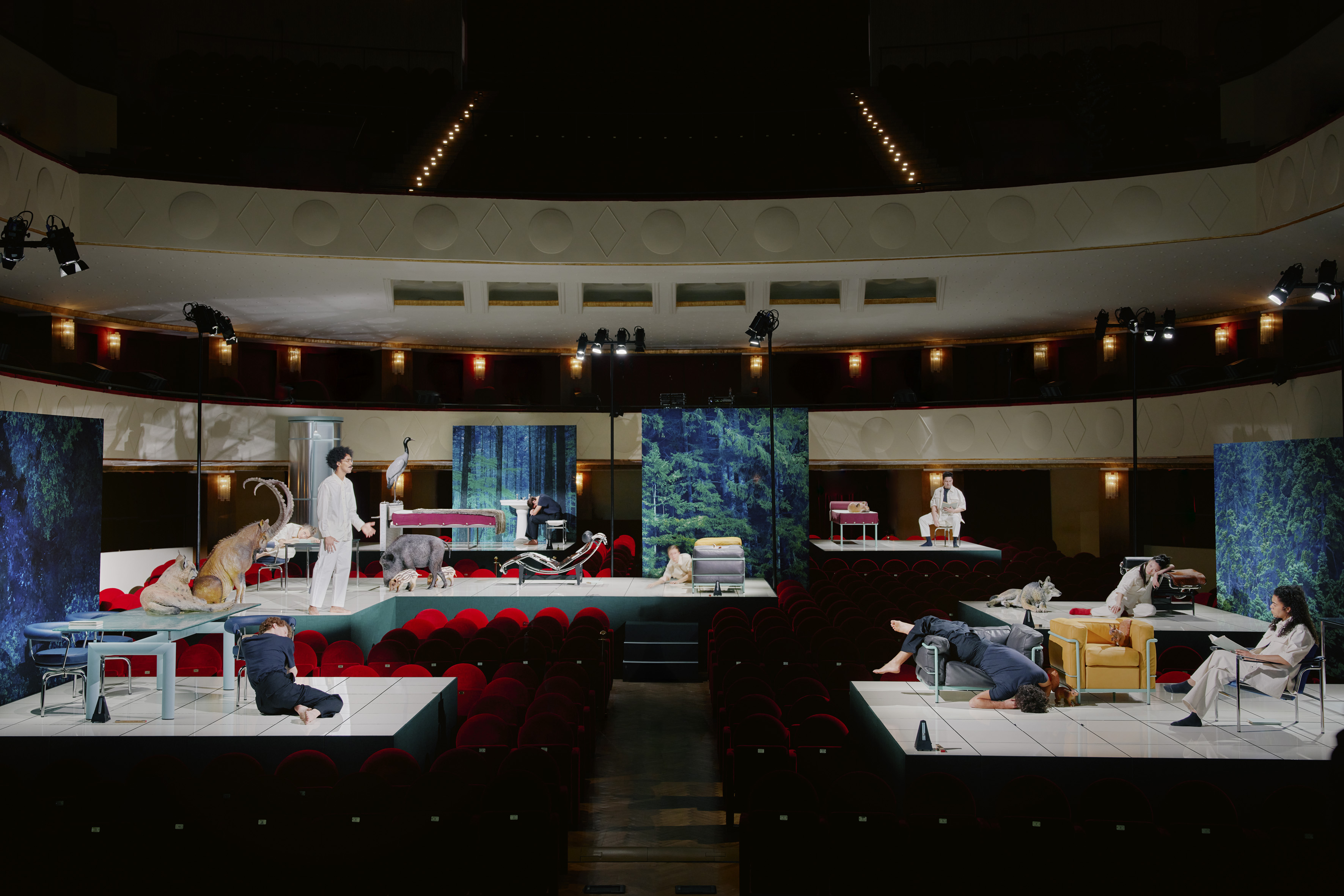 Move over, palazzos. Performances were the biggest trend at Milan Design Week
Move over, palazzos. Performances were the biggest trend at Milan Design WeekThis year, brands brought on the drama via immersive installations across the city
By Dan Howarth
-
 The art of the textile label: how British mill-made cloth sold itself to Indian buyers
The art of the textile label: how British mill-made cloth sold itself to Indian buyersAn exhibition of Indo-British textile labels at the Museum of Art & Photography (MAP) in Bengaluru is a journey through colonial desire and the design of mass persuasion
By Aastha D
-
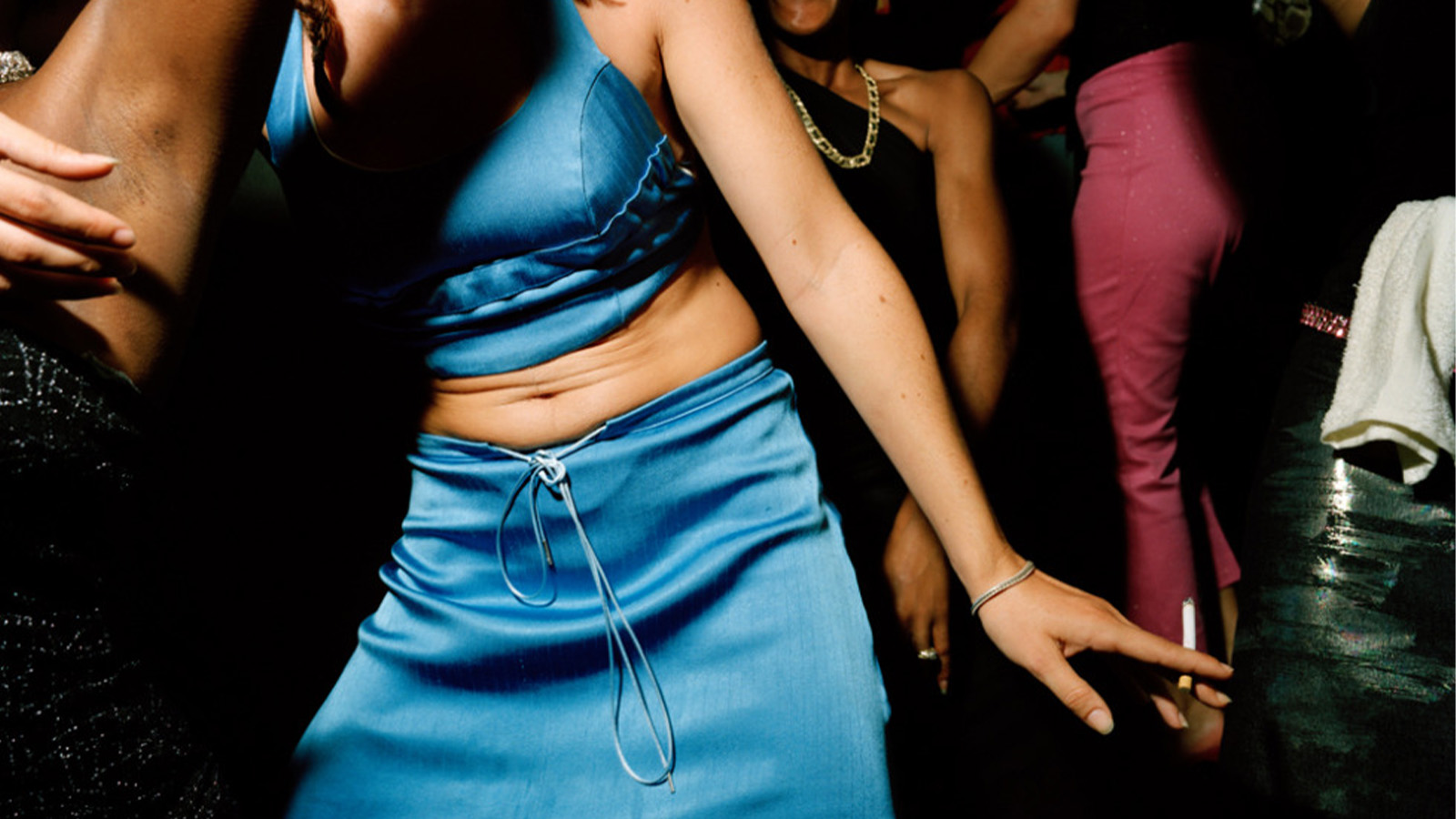 From counter-culture to Northern Soul, these photos chart an intimate history of working-class Britain
From counter-culture to Northern Soul, these photos chart an intimate history of working-class Britain‘After the End of History: British Working Class Photography 1989 – 2024’ is at Edinburgh gallery Stills
By Tianna Williams
-
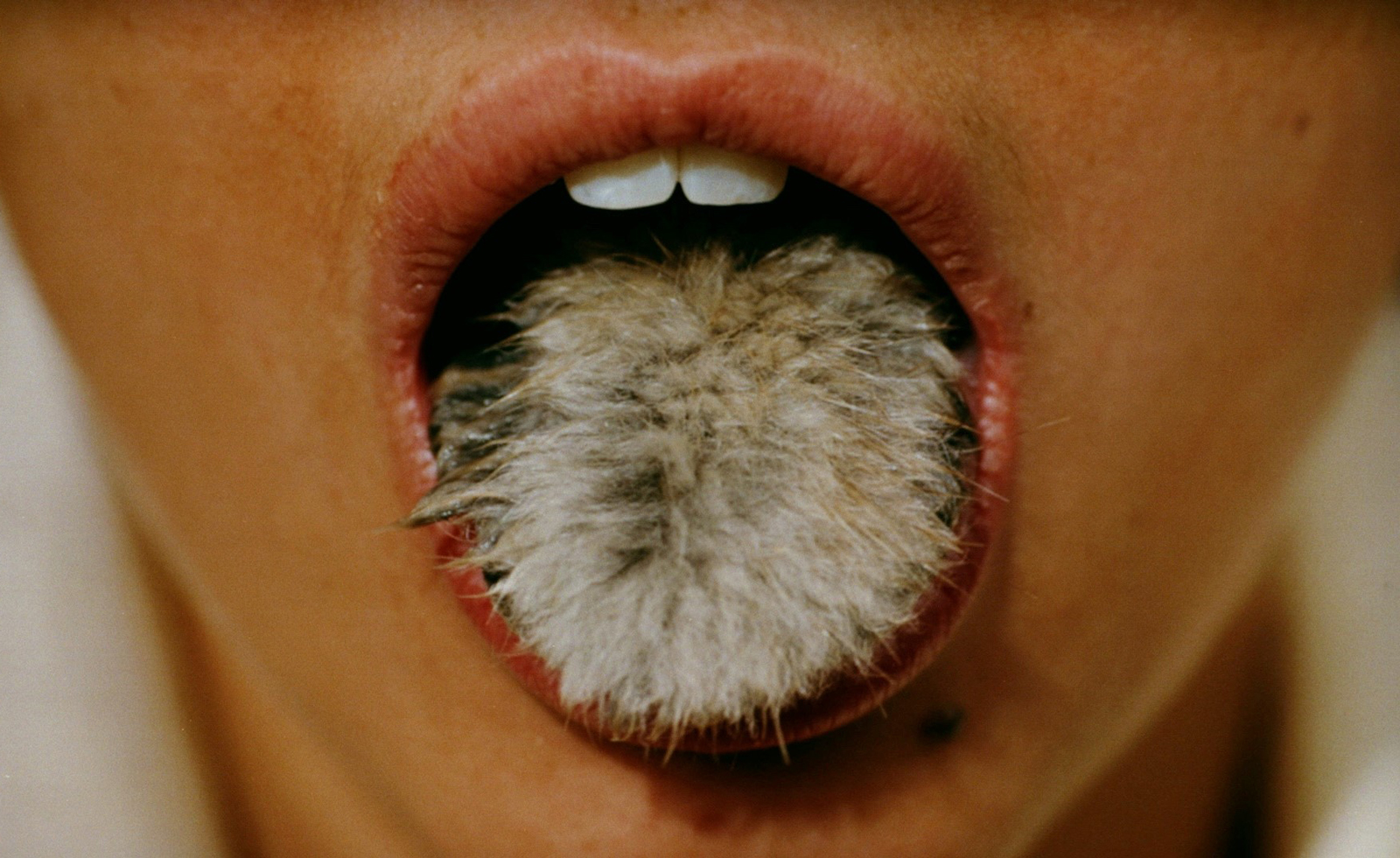 Surrealism as feminist resistance: artists against fascism in Leeds
Surrealism as feminist resistance: artists against fascism in Leeds‘The Traumatic Surreal’ at the Henry Moore Institute, unpacks the generational trauma left by Nazism for postwar women
By Katie Tobin
-
 From activism and capitalism to club culture and subculture, a new exhibition offers a snapshot of 1980s Britain
From activism and capitalism to club culture and subculture, a new exhibition offers a snapshot of 1980s BritainThe turbulence of a colourful decade, as seen through the lens of a diverse community of photographers, collectives and publications, is on show at Tate Britain until May 2025
By Anne Soward
-
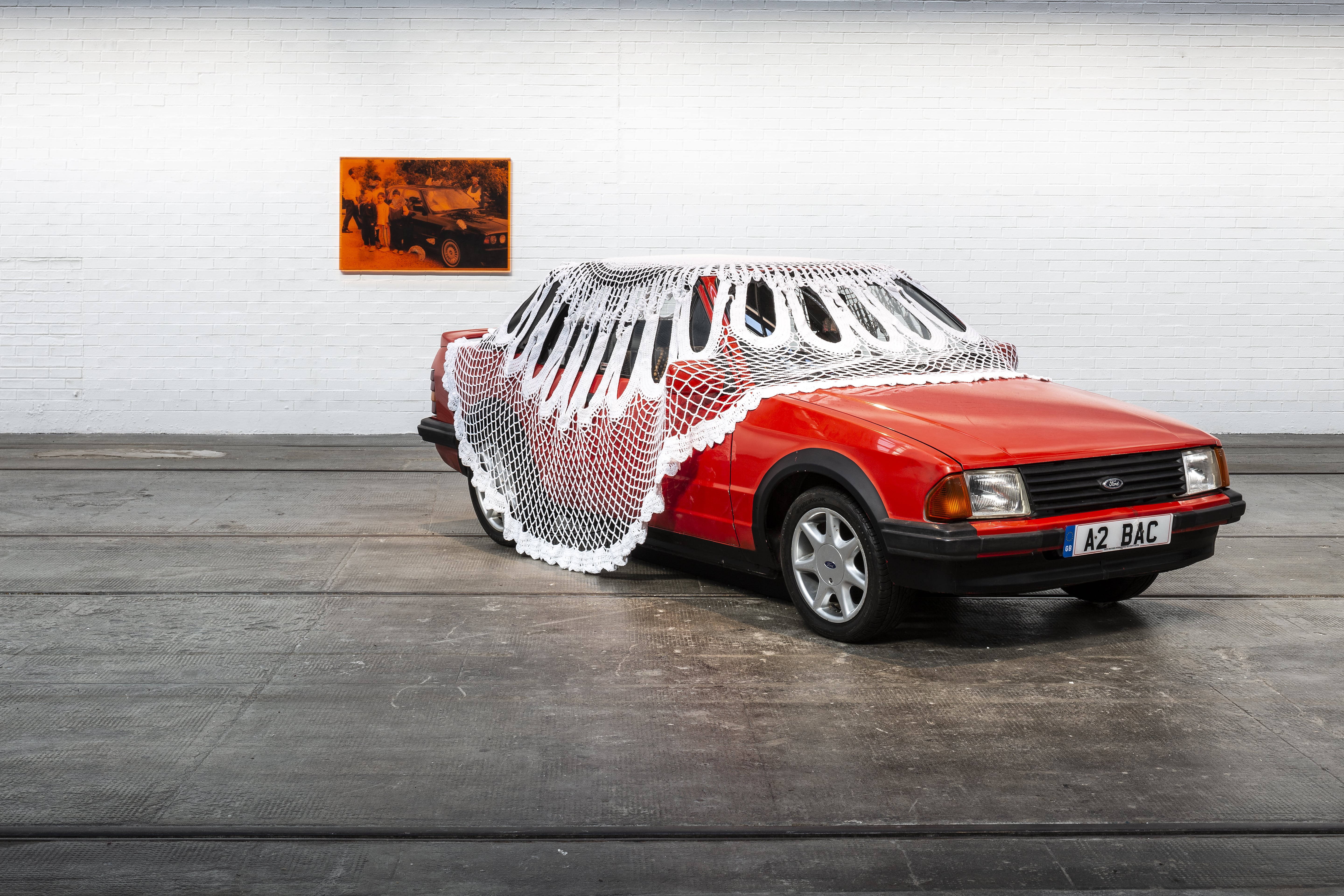 Jasleen Kaur wins the Turner Prize 2024
Jasleen Kaur wins the Turner Prize 2024Jasleen Kaur has won the Turner Prize 2024, recognised for her work which reflects upon everyday objects
By Hannah Silver
-
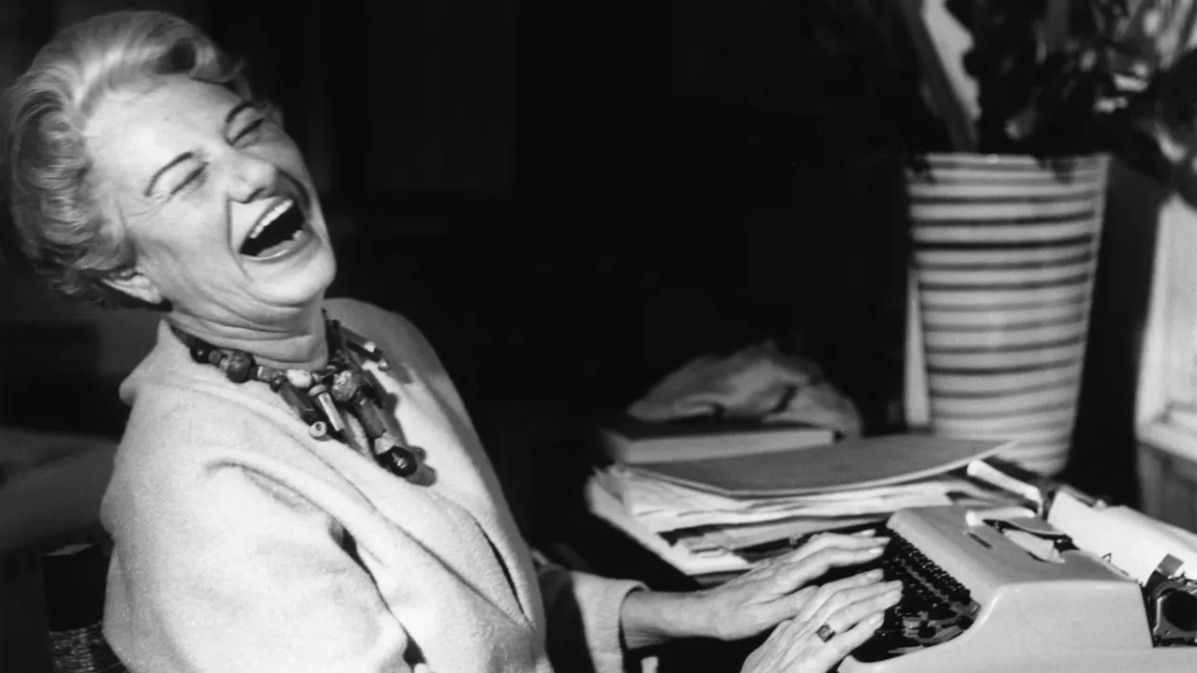 Peggy Guggenheim: ‘My motto was “Buy a picture a day” and I lived up to it’
Peggy Guggenheim: ‘My motto was “Buy a picture a day” and I lived up to it’Five years spent at her Sussex country retreat inspired Peggy Guggenheim to reframe her future, kickstarting one of the most thrilling modern-art collections in history
By Caragh McKay
-
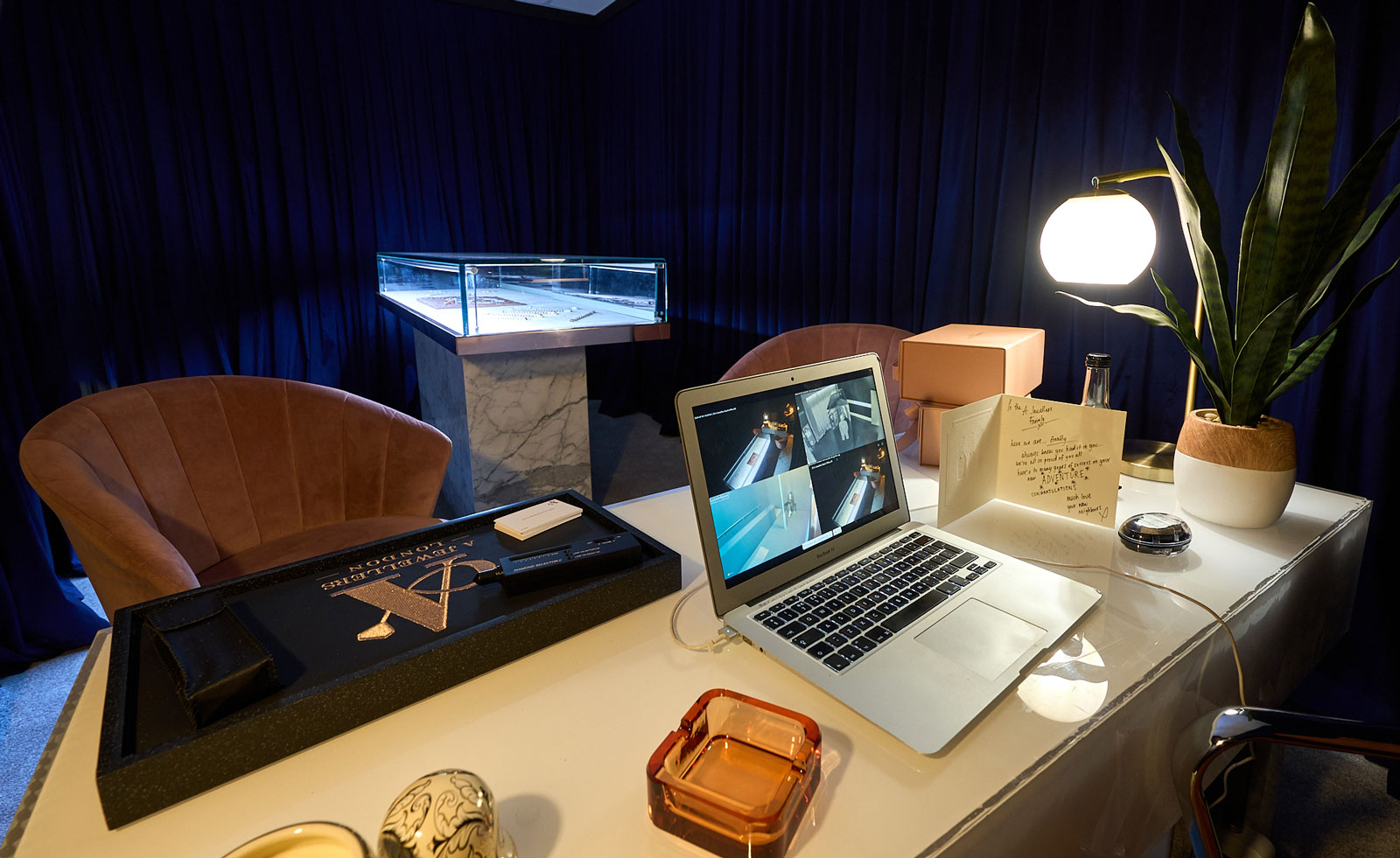 Please do touch the art: enter R.I.P. Germain’s underground world in Liverpool
Please do touch the art: enter R.I.P. Germain’s underground world in LiverpoolR.I.P. Germain’s ‘After GOD, Dudus Comes Next!’ is an immersive installation at FACT Liverpool
By Will Jennings
-
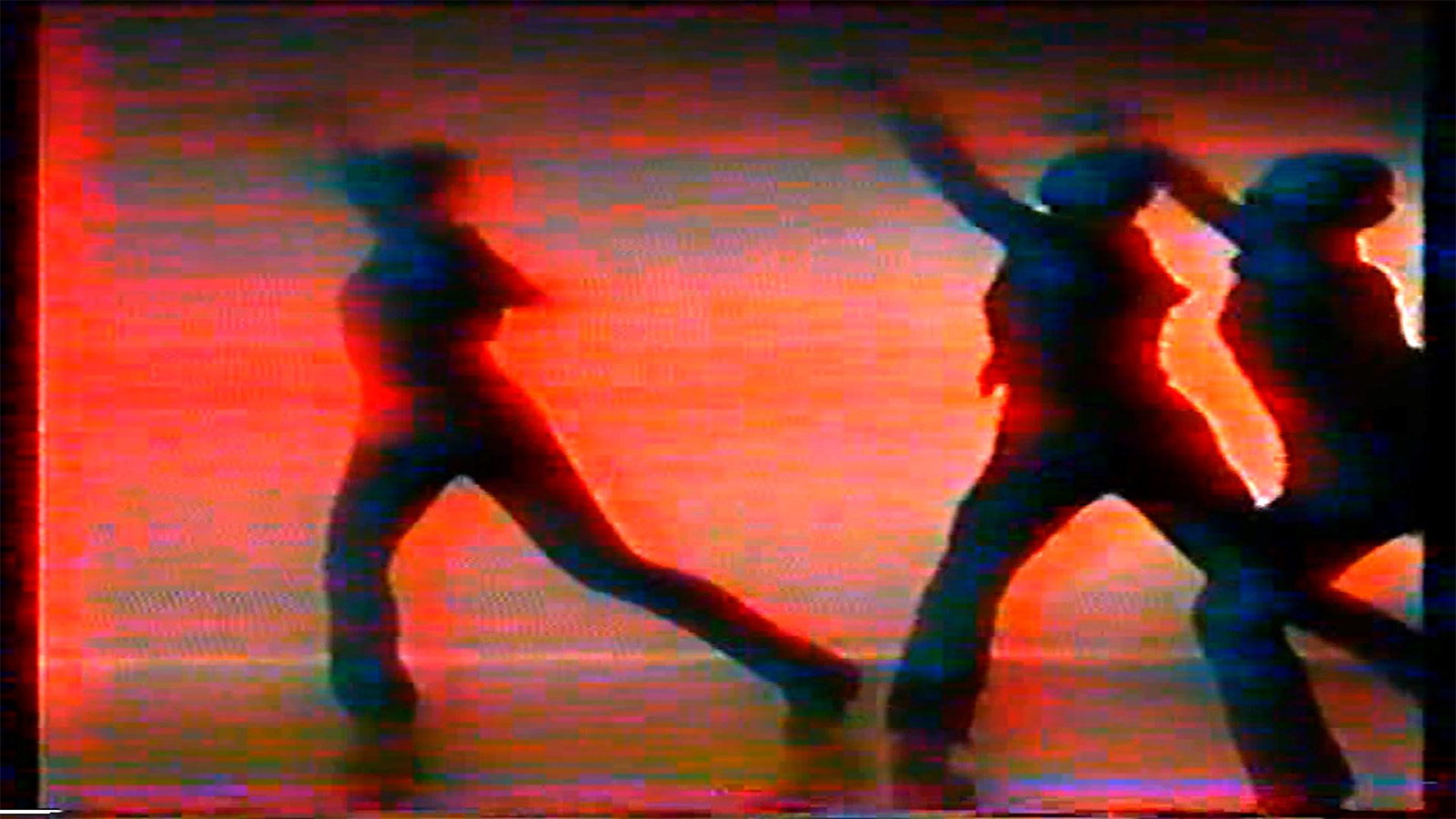 ‘Mental health, motherhood and class’: Hannah Perry’s dynamic installation at Baltic
‘Mental health, motherhood and class’: Hannah Perry’s dynamic installation at BalticHannah Perry's exhibition ’Manual Labour’ is on show at Baltic in Gateshead, UK, a five-part installation drawing parallels between motherhood and factory work
By Emily Steer